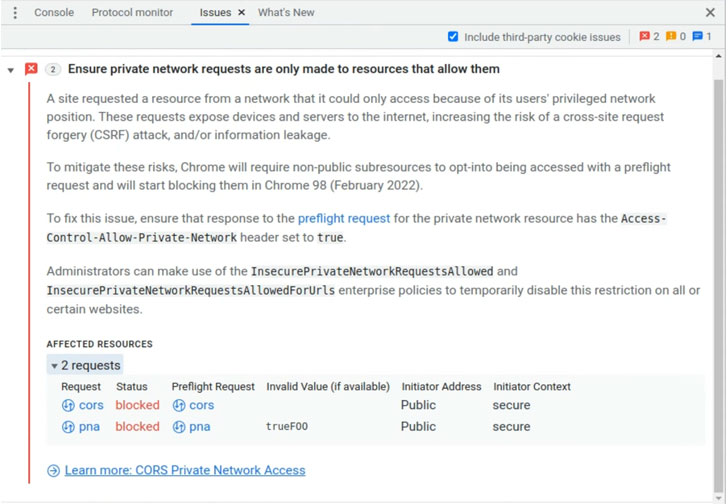
Chrome Limits Websites’ Direct Access to Private Networks for Security Reasons
Google Chrome has announced plans to prohibit public websites from directly accessing endpoints located within private networks as part of an upcoming major security shakeup to prevent intrusions via the browser.
The proposed change is set to be rolled out in two phases as part of releases Chrome 98 and Chrome 101 scheduled in the coming months via a newly implemented W3C specification called private network access (PNA).
“Chrome will start sending a CORS preflight request ahead of any private network request for a subresource, which asks for explicit permission from the target server,” Titouan Rigoudy and Eiji Kitamura said. “This preflight request will carry a new header, Access-Control-Request-Private-Network: true, and the response to it must carry a corresponding header, Access-Control-Allow-Private-Network: true.”
What this means is that starting with Chrome version 101, any website accessible via the internet will be made to seek explicit permission from the browser before they can access internal network resources. In other words, the new PNA specification adds a provision inside the browser through which websites can request servers gated behind local networks to obtain a connection.
“The specification also extends the Cross-Origin Resource Sharing (CORS) protocol so that websites now have to explicitly request a grant from servers on private networks before being allowed to send arbitrary requests,” Rigoudy noted in August 2021, when it first announced plans to deprecate access to private network endpoints from non-secure websites.
The goal, the researchers said, is to safeguard users from cross-site request forgery (CSRF) attacks targeting routers and other devices on private networks, which enable bad actors to reroute unsuspecting users to malicious domains.
Full article attribution is made to its original source and author.


